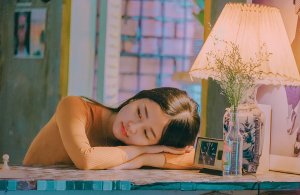Anxiety is a natural human reaction. And contrary to popular opinion, anxiety can be beneficial because it alerts poeple to potential dangers and gives off an adrenaline rush that can help them accomplish a task in record time.
But like many things, anxiety when taken into the extreme can have disastrous results. These feelings can lead to panic attacks and chronic worrying that can slowly affect the way a person deals with other people and with normal life situations.
Anxiety disorder, as psychologists would want to call this condition, can range from something as simple as feelings of uneasiness to responses as severe as feelings of terror and claustrophobia. Fortunately, among the psychological disorders, anxiety problems are one of the most common and the most treatable. Combinations of medications and behavior therapy are often given. Symptoms of anxiety problems include fast heartbeat and palpitations, chest pains and difficulty in breathing, anxious thoughts that persist even without any concrete reason, dizziness and nausea, sweating, trembling, difficulty in concentrating, fearful thoughts and feelings of disorientation and claustrophobia.
Below are the types of anxiety disorders as mentioned in the DSM-IV.
Generalized Anxiety Disorder is characterized by excessive but unwarranted worries that a person cannot stop having. Although most people will experience these kinds of feelings every once in a while, a disorder is only diagnosed if the feelings persist for six months and start to affect work and the person痴 relationships with other people. Some of the common symptoms that people should watch out for are physiological reactions such as headaches, trembling, muscle tension, sweating, and trouble staying or falling asleep. There are also bouts of restlessness and sweating.
Panic disorder is another type of anxiety disorder characterized by feelings of terror that strikes so suddenly without immediate cause. Often, people who are having panic attacks feel pains in their chest with their heartbeats going fast. Some will also feel lightheadedness and even nausea. They will find it hard to breathe and may feel unwarranted fears. Although most attacks usually last for about a few minutes, there are some that last for almost ten minutes and even those that continue on for an hour. A disorder is diagnosed when the attacks happen in a time frame of just four weeks.
We fear a lot of things but there are some people who are quite irrational with their fears. These fears on things are called phobias. There is a long list of phobia forms, having a specific name for each item that is feared. A person, for instance, who is afraid of open spaces has what psychologists like to call agoraphobia. Phobias are characterized by extreme anxiety and even panic attacks when confronted by the object being feared. Many of the symptoms that are felt during panic attacks are also felt during phobic episodes.
Post-traumatic stress disorder also falls under anxiety disorders. PTSD, as it is often called, often developed after experiencing, witnessing or participating in a traumatic and terrorizing event such as death, war, torture and other extreme circumstances. PTSD is characterized by intense anxiety and nightmares at night. People who have PTSD also find it difficult to sleep and to concentrate on things. Often, anxiety attacks go to the extreme when confronted with situations that have similarities with the one experienced.






